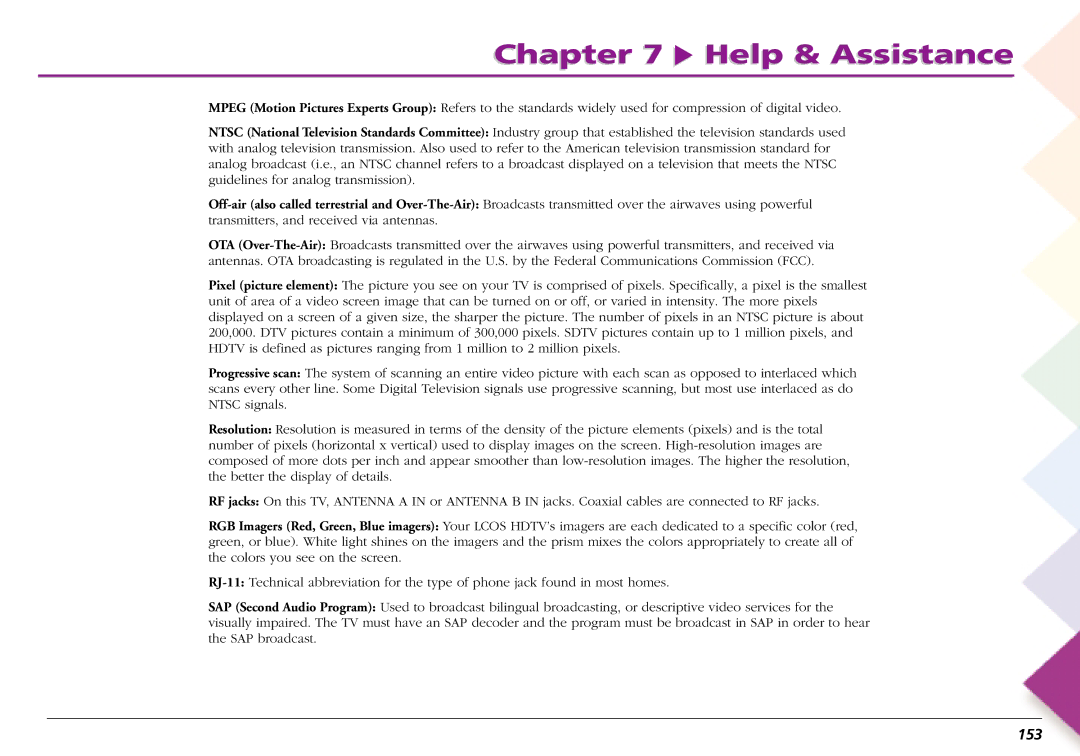
Chapter 7  Help & Assistance
Help & Assistance
MPEG (Motion Pictures Experts Group): Refers to the standards widely used for compression of digital video.
NTSC (National Television Standards Committee): Industry group that established the television standards used with analog television transmission. Also used to refer to the American television transmission standard for analog broadcast (i.e., an NTSC channel refers to a broadcast displayed on a television that meets the NTSC guidelines for analog transmission).
OTA
Pixel (picture element): The picture you see on your TV is comprised of pixels. Specifically, a pixel is the smallest unit of area of a video screen image that can be turned on or off, or varied in intensity. The more pixels displayed on a screen of a given size, the sharper the picture. The number of pixels in an NTSC picture is about 200,000. DTV pictures contain a minimum of 300,000 pixels. SDTV pictures contain up to 1 million pixels, and HDTV is defined as pictures ranging from 1 million to 2 million pixels.
Progressive scan: The system of scanning an entire video picture with each scan as opposed to interlaced which scans every other line. Some Digital Television signals use progressive scanning, but most use interlaced as do NTSC signals.
Resolution: Resolution is measured in terms of the density of the picture elements (pixels) and is the total number of pixels (horizontal x vertical) used to display images on the screen.
RF jacks: On this TV, ANTENNA A IN or ANTENNA B IN jacks. Coaxial cables are connected to RF jacks.
RGB Imagers (Red, Green, Blue imagers): Your LCOS HDTV’s imagers are each dedicated to a specific color (red, green, or blue). White light shines on the imagers and the prism mixes the colors appropriately to create all of the colors you see on the screen.
SAP (Second Audio Program): Used to broadcast bilingual broadcasting, or descriptive video services for the visually impaired. The TV must have an SAP decoder and the program must be broadcast in SAP in order to hear the SAP broadcast.
